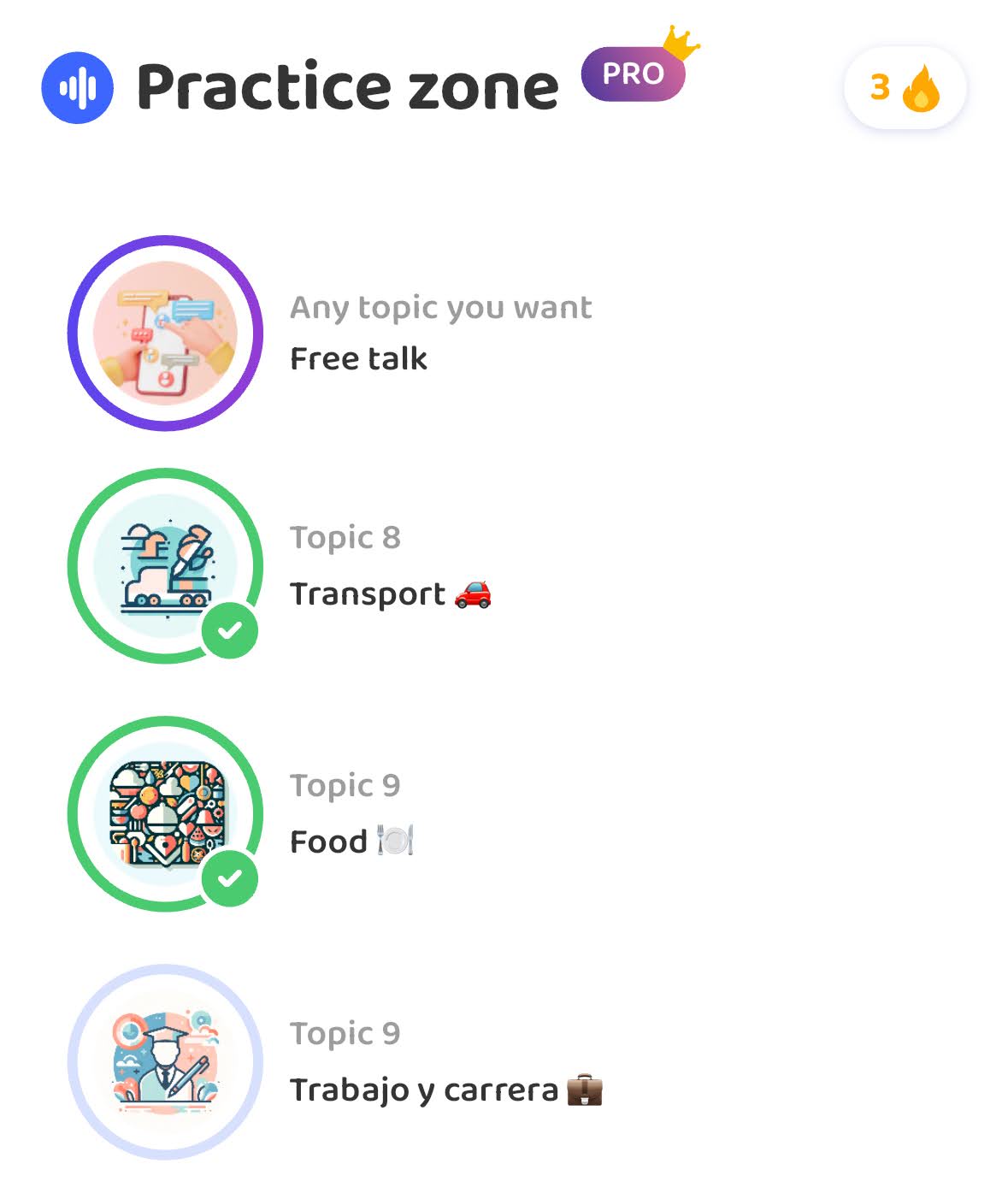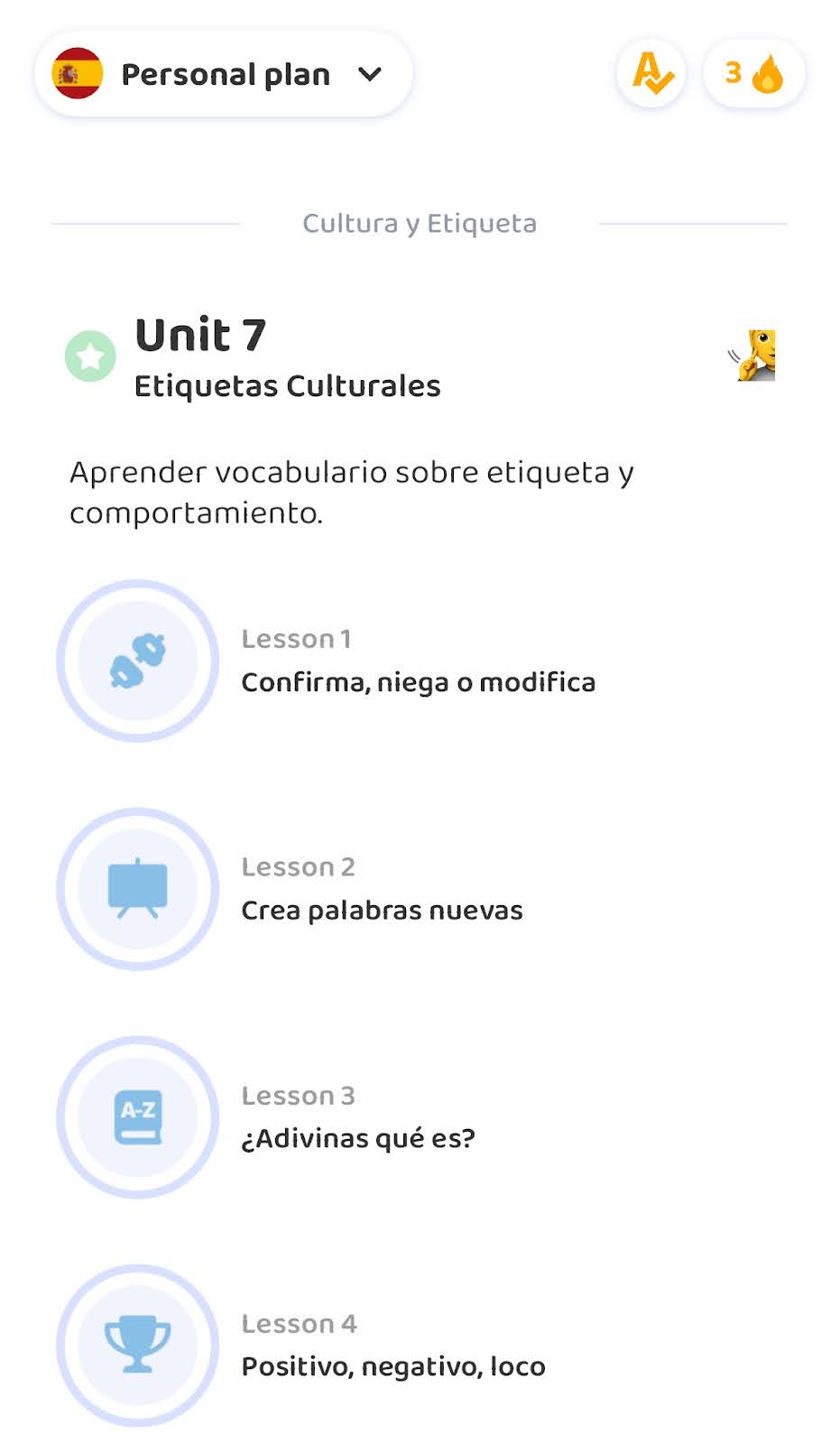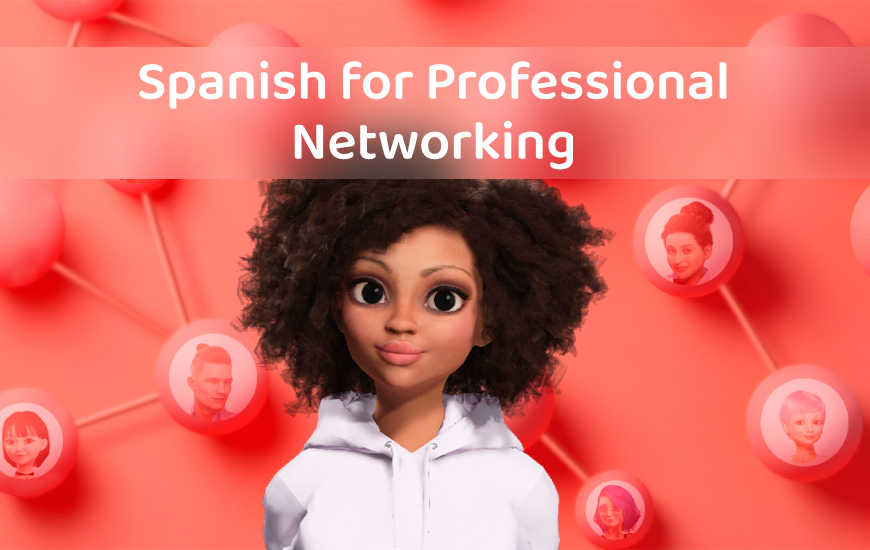¡Hola, estrella del networking! I’m Lucia, your stylish guide to mastering the art of professional connections en español. Networking is like accessorizing the perfect outfit—it’s all about adding the right touches to make a statement. Learning Spanish will help you build relationships that truly shine. Let’s step onto the networking runway and turn every conversation into an opportunity. ¡Vamos!
Speak to Succeed
Bilingual is the new “professional chic”. In today’s global industries, being bilingual isn’t just an advantage—it’s a game-changer.
- Make meaningful connections: Speaking Spanish allows you to engage with colleagues, clients, and collaborators on a deeper level. Imagine attending a design expo in Buenos Aires and seamlessly chatting about trends with local professionals.
- Stand out in the crowd: Knowing Spanish sets you apart at networking events. While others might rely on interpreters or stilted English, you’ll be charming your audience with authentic conversations.
- Access exclusive opportunities: Many companies prioritize bilingual professionals for roles that require international collaboration. Being fluent in Spanish can help you step into those roles confidently.
Here’s how Spanish can transform your interactions:
- At a global conference: “¡Hola! Me encantó tu presentación sobre sostenibilidad. ¿Cómo crees que podemos aplicarlo a nuestra industria?”
(Hi! I loved your presentation on sustainability. How do you think we can apply it to our industry?) - In a casual networking setting: “Trabajo en diseño de moda. ¿Qué tendencias estás viendo en tu mercado local?”
(I work in fashion design. What trends are you seeing in your local market?)
Your Secret Weapon for Building Trust
Speaking Spanish shows respect for someone’s language and culture, making them more likely to trust and collaborate with you. Plus, it demonstrates that you’re adaptable, open-minded, and committed to understanding global perspectives. With my help in the Praktika app, I can help you sound like a natural while strengthening your cultural competency!
The Perfect Fit: Crafting Conversations That Click
Start with a strong first impression. First impressions matter, especially in professional settings. Here’s how to introduce yourself and leave a lasting impact:
- “Hola, soy [tu nombre]. Trabajo en [tu industria] y me encanta conocer gente nueva.”
(Hi, I’m [your name]. I work in [your industry], and I love meeting new people.) - Add a touch of personality: “Además, soy un apasionado/a del arte moderno. ¿Qué te inspira a ti?”
(Also, I’m passionate about modern art. What inspires you?)
Starting with enthusiasm and curiosity shows you’re approachable and genuinely interested in others.
Keep the Conversation Flowing
Once introductions are out of the way, dive deeper with open-ended questions:
- “¿Qué desafíos interesantes has enfrentado en tu trabajo reciente?”
(What interesting challenges have you faced in your recent work?) - “¿Cuál ha sido tu proyecto favorito hasta ahora?”
(What’s been your favorite project so far?)
These questions encourage meaningful dialogue and give you a chance to share your own experiences.
Share Anecdotes and Stories, Not Just Facts
Facts can be forgettable, but stories take the conversation to the next level. Instead of saying, “Soy diseñador/a,” try:
- “Diseñé una colección inspirada en la arquitectura de Buenos Aires. Fue un proyecto increíble que conectó moda y cultura.”
(I designed a collection inspired by Buenos Aires’ architecture. It was an amazing project that blended fashion and culture.)
Stories make your expertise come alive and leave a memorable impression.
Compliment with Purpose
A well-placed compliment can build rapport instantly:
- “Tu presentación fue fascinante. ¿Cómo te inspiraste para abordarla de esa manera?”
(Your presentation was fascinating. What inspired you to approach it that way?) - “Esa idea suena brillante. ¿Cómo la implementaste?”
(That idea sounds brilliant. How did you implement it?)
Compliments paired with genuine interest show you’re attentive and engaged.
Perfecting the Art of Follow-Up
Timing Is Key
Don’t let the magic fade. Aim to follow up within 24–48 hours after meeting someone.
- Quick but thoughtful: Send a message while your conversation is still fresh in their mind.
- For example: “¡Hola! Fue un placer conocerte en el evento de diseño. Me encantaría hablar más sobre tu trabajo en sostenibilidad.”
(Hi! It was a pleasure meeting you at the design event. I’d love to talk more about your work in sustainability.

Use Personalized Details
Show them you were paying attention by referencing something specific you discussed. You can practice any topic in the Praktika app’s Free Talk!
- “Me encantó tu perspectiva sobre las tendencias globales. ¿Crees que el minimalismo seguirá dominando la moda?”
(I loved your perspective on global trends. Do you think minimalism will continue to dominate fashion?) - “Mencionaste un libro sobre innovación. ¿Podrías compartirme el título? Me encantaría leerlo.”
(You mentioned a book on innovation. Could you share the title with me? I’d love to read it.)
Personal touches like these show genuine interest and help strengthen the connection.
Choose Your Medium Wisely
The follow-up channel matters. Here are a few options:
- Email: Professional and reliable for most settings.
- LinkedIn: Perfect for building your professional network and continuing the conversation.
- WhatsApp: If the interaction felt informal, a quick message can keep things friendly.
Offer Value in Return
Think of follow-ups as exchanges, not one-sided requests.
- Share an article or resource they might find helpful:
- “Vi este artículo sobre tendencias en diseño y pensé que te interesaría.”
(I saw this article on design trends and thought you might find it interesting.)
- “Vi este artículo sobre tendencias en diseño y pensé que te interesaría.”
- Invite them to collaborate:
- “Me encantaría saber más sobre tus proyectos. Tal vez podamos explorar una colaboración en el futuro.”
(I’d love to learn more about your projects. Perhaps we could explore a future collaboration.)
- “Me encantaría saber más sobre tus proyectos. Tal vez podamos explorar una colaboración en el futuro.”
Networking in Style: Cultural Do’s and Don’ts Across Spanish-Speaking Countries
Do: Dress to Impress
Your appearance speaks volumes before you even say a word.
- Mexico and Colombia: Business attire leans formal, even at casual networking events. A blazer or polished dress goes a long way.
- Spain and Argentina: Creativity is welcomed—add a stylish accessory or unique piece that reflects your personality.
Remember, being well-dressed shows respect for the occasion and the people you meet.
Do: Perfect Your Greeting
First impressions matter, and greetings vary depending on the country:
- Spain: Expect a handshake or two cheek kisses for introductions.
- Argentina: A single cheek kiss is common, even in professional settings.
- Mexico: Stick with a handshake for formal events, though a warm smile adds a friendly touch.
If you’re unsure, follow the lead of the person you’re meeting.
Don’t: Skip Small Talk
Diving straight into business can feel abrupt. Instead, build rapport with casual conversation:
- In Mexico: Ask about family—“¿Cómo está tu familia?” (How is your family?) shows genuine interest.
- In Spain: Talk about food or local culture: “¿Tienes algún restaurante favorito aquí?” (Do you have a favorite restaurant here?).
Small talk isn’t just polite; it builds trust.
Do: Show Respect for Time—But Be Flexible
Punctuality expectations vary:
- Chile and Costa Rica: Being on time is appreciated. Arriving late may come across as unprofessional.
- Argentina and Spain: A relaxed approach to time is common, but aim to be respectful by not being too early or excessively late.
Don’t: Forget Follow-Up Etiquette
Each country has its preferred ways of staying in touch:
- In Mexico and Colombia: Emails are the go-to for professional follow-ups.
- In Spain and Argentina: Adding someone on LinkedIn or WhatsApp is perfectly acceptable for casual networking relationships.
Rehearse Like a Runway Star

Simulate Networking Events Across Regions
Each country has its unique vibe, and Praktika helps you adapt to all of them:
- In Spain: Practice introducing yourself at a design expo in Madrid, where creativity and flair are key.
Example: “Hola, soy [tu nombre]. Trabajo en diseño de moda y estoy aquí para aprender sobre tendencias internacionales.”
(Hi, I’m [your name]. I work in fashion design, and I’m here to learn about international trends.)
- In Mexico: Rehearse striking up conversations at a business conference, where warmth and personal connections matter.
Example: “¿Qué te inspiró a trabajar en esta industria?”
(What inspired you to work in this industry?)
- In Argentina: Role-play engaging with industry leaders at a networking dinner, where storytelling shines.
Example: “Cuando comencé en diseño, me fascinó cómo las historias personales pueden inspirar la moda.”
(When I started in design, I was fascinated by how personal stories can inspire fashion.)
Navigate Challenging Scenarios with Ease
Not every interaction is smooth, but with me as your personal tutor in the Praktika app, you’ll be ready for anything:
- Handling interruptions: Practice saying, “Disculpa, ¿puedo terminar mi idea rápidamente?”
(Excuse me, may I quickly finish my thought?) - Redirecting the conversation: Learn to say, “Eso es interesante, pero me encantaría escuchar más sobre tu experiencia.”
(That’s interesting, but I’d love to hear more about your experience.)
Perfect Your Professional Pitch
Your pitch is like your signature piece—it should be polished and unforgettable. With Praktika, we’ll craft a pitch that suits any region:
- Spain: Focus on innovation: “Estoy desarrollando una línea sostenible inspirada en la arquitectura moderna.”
(I’m developing a sustainable line inspired by modern architecture.) - Mexico: Highlight collaboration: “Creo en trabajar con artesanos locales para crear piezas únicas.”
(I believe in working with local artisans to create unique pieces.)
Practice Makes Perfect
With me as your AI guide, we’ll rehearse greetings, small talk, and follow-ups until they feel effortless. Meet me in the Praktika app so we can rehearse together and make sure your Spanish is as polished as your professional style. ¡Empieza hoy y conquista el mundo profesional!

From Lucia
Lucia is a passionate Spanish and English tutor from Buenos Aires, Argentina, with a flair for fashion and a love for modern art. A graduate of Parsons School of Design, she combines her creativity and international experience to make language learning engaging and practical. When she’s not tutoring, Lucia is busy building her dream clothing brand and inspiring students to conquer their language goals with confidence and style.
